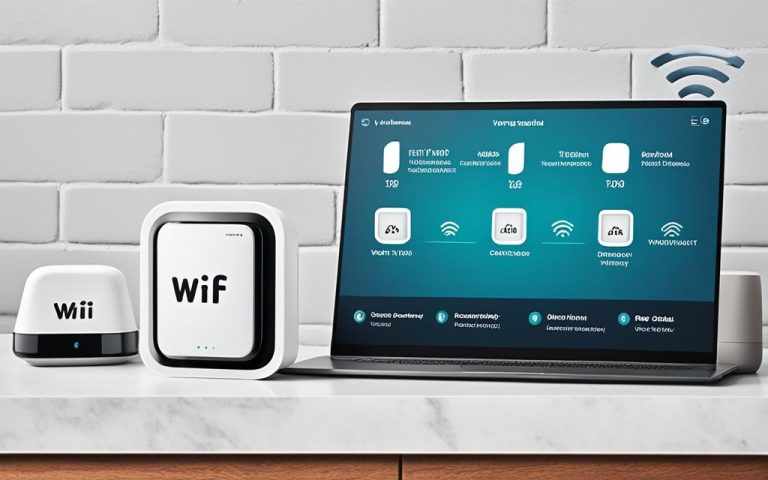Wi-Fi has become an indispensable presence in public spaces, providing connectivity for consumers in various locations worldwide. To meet this growing demand, cities are increasingly deploying open municipal wireless networks, offering free Wi-Fi to residents and visitors alike. In this article, we will explore the motivations behind the expansion of Wi-Fi in public spaces and the benefits it brings to cities and their residents.
Access to Wi-Fi in public spaces is no longer a luxury but an expectation. Whether it’s checking emails, streaming content, or staying connected on social media, people rely on Wi-Fi to stay connected and productive. By providing free Wi-Fi, cities enhance the experience of their residents and create a more inclusive and connected community.
With the proliferation of smartphones and other connected devices, the need for reliable and fast Wi-Fi has become even more critical. Cities recognize this trend and are taking steps to bridge the digital divide and ensure equal access to the internet for all. Open municipal wireless networks play a crucial role in bringing connectivity to public spaces, such as parks, libraries, and community centers.
By offering Wi-Fi in public spaces, cities not only meet the immediate connectivity needs of their residents but also contribute to economic development. Access to Wi-Fi enables entrepreneurs to work remotely, encourages innovation, and attracts businesses to the area. Additionally, it enhances the experience for tourists and visitors, boosting the local economy.
In the following sections, we will delve deeper into the various aspects of Wi-Fi deployment in public spaces. We will explore low-risk pilot projects, leveraging existing infrastructure, smart city use cases, and the importance of public-private partnerships. These strategies enable cities to expand connectivity efficiently while maximizing the benefits of Wi-Fi in public spaces.
Getting Started with Public Wi-Fi: Low-Risk Pilots
When considering the deployment of public Wi-Fi networks, cities should start with low-risk pilot projects instead of striving for citywide coverage from the beginning. These pilot projects can be implemented in high-profile areas with existing robust internet connectivity, allowing for limited infrastructure investment. Locations such as libraries and community centers are good starting points to bring wireless access to vulnerable populations.
By starting with pilot projects, cities can evaluate the feasibility and effectiveness of public Wi-Fi deployment while minimizing risks. These projects provide valuable insights into user demand, network performance, and potential challenges, allowing cities to make informed decisions for future expansions.
A successful pilot project can serve as a proof of concept, demonstrating the benefits of public Wi-Fi to city officials, stakeholders, and the community. It can help build support for further investment in expanding coverage to additional areas and bring about positive change.
Implementing a low-risk pilot project allows cities to test the waters before making significant commitments. It provides an opportunity to learn and refine strategies without major financial implications. Moreover, it enables cities to address any technical or operational issues in a controlled environment, ensuring a smoother rollout in the long run.
While deploying pilot projects, cities can also collaborate with local businesses, organizations, and telecommunications providers to leverage existing infrastructure and resources. This collaborative approach can help reduce costs and accelerate the implementation process.
| Pilot Project | Location | Partners |
|---|---|---|
| Project 1 | Main Public Library | Local Telecommunications Provider |
| Project 2 | Community Center | Local Business Association |
| Project 3 | Park and Recreation Area | Nonprofit Organization |
Table: Example pilot projects for public Wi-Fi deployment
These partnerships can also enhance the sustainability of public Wi-Fi networks by sharing operational costs and responsibilities. In turn, this can lead to improved service quality and better coverage for users.
With the data and feedback gathered from pilot projects, cities can refine their approach, expand coverage to underserved areas, and develop a comprehensive public Wi-Fi strategy. By taking incremental steps and leveraging existing infrastructure, cities can create a robust and inclusive wireless network that benefits residents, businesses, and visitors alike.
Utilizing Existing Infrastructure for Wi-Fi Networks
Cities can maximize their resources by harnessing existing infrastructure to establish Wi-Fi networks, significantly reducing the cost and deployment time. By repurposing available assets, such as telephone booths and streetlights, cities can seamlessly integrate public Wi-Fi access points throughout their urban landscapes. This innovative approach not only enhances connectivity but also promotes the efficient utilization of existing infrastructure.
Repurposing telephone booths and streetlights offers an effective solution for expanding Wi-Fi networks. Public Wi-Fi access points can be strategically installed in these widely distributed structures, ensuring coverage throughout the city. Transforming these infrastructural elements into Wi-Fi hotspots enables seamless connectivity for residents, visitors, and businesses alike, without the need for extensive construction or investment in standalone infrastructure.
Benefits of Utilizing Existing Infrastructure for Wi-Fi Networks
When cities leverage their ownership, operation, and influence over existing infrastructure, they can unlock several key benefits:
- Cost Reduction: By utilizing readily available structures, cities can avoid the high capital expenditure associated with building new infrastructure solely for Wi-Fi networks.
- Time Efficiency: Repurposing existing assets expedites the deployment process, ensuring faster access to Wi-Fi connectivity.
- Expanded Reach: Wi-Fi networks integrated into familiar structures extend connectivity to diverse areas, reaching both urban and suburban communities.
- Sustainable Solutions: Utilizing existing infrastructure aligns with sustainability goals by minimizing environmental impact through efficient use of resources.
By harnessing the power of existing infrastructure, cities can create a pervasive Wi-Fi network that seamlessly integrates with the urban environment, providing reliable connectivity and fostering economic growth.
Utilizing existing infrastructure ensures the efficient use of resources, transforming everyday structures into powerful tools for connectivity. These repurposed assets become the backbone of a seamlessly connected urban landscape, supporting the needs and aspirations of both residents and businesses.
Smart City Use Cases for Wi-Fi Networks
Public Wi-Fi networks have transformed into more than just a source of internet connectivity. They serve as the foundation for various smart city applications, enabling cities to enhance services, improve efficiency, and create a more connected urban environment. Some of the key use cases for Wi-Fi networks in smart cities include:
Citywide Location Services
Wi-Fi networks enable citywide location services, allowing residents and visitors to easily navigate through urban areas. By leveraging Wi-Fi signals, cities can provide accurate indoor and outdoor positioning, helping individuals locate specific buildings or points of interest. This technology is particularly useful in large public spaces, shopping centers, and transportation hubs.
Smart Parking and Traffic Monitoring Solutions
Wi-Fi networks play a crucial role in implementing smart parking and traffic monitoring solutions. By deploying Wi-Fi sensors or cameras, cities can gather real-time data on parking occupancy, traffic flow, and congestion. This information enables better management of parking resources, reduces traffic congestion, and improves overall urban mobility.
Automated Utility Meter Reading
In a smart city ecosystem, Wi-Fi networks enable automated utility meter reading. By connecting utility meters to the network, cities can remotely monitor and collect accurate consumption data. This eliminates the need for manual meter reading, reduces operational costs, and enables more efficient management of resources.
Air Quality Monitoring
Wi-Fi networks also support air quality monitoring in smart cities. By deploying sensors throughout the urban environment, cities can gather real-time data on air pollution levels, helping to identify high-risk areas and implement targeted measures for improvement. This data-driven approach ensures a healthier and more sustainable living environment for residents.
Situational Awareness for Law Enforcement
Wi-Fi networks enhance situational awareness for law enforcement agencies. By utilizing Wi-Fi signals, cities can track and monitor individuals, vehicles, or specific devices in real-time. This technology aids in crime prevention, investigation, and ensures the safety of city residents. However, it’s important to strike a balance between using this technology for security purposes and respecting individuals’ privacy rights.
One city that has effectively leveraged Wi-Fi networks for smart city applications is Barcelona. Through a comprehensive deployment of intelligent infrastructure, Barcelona has successfully implemented several smart city use cases. This includes the monitoring of parking spaces, managing electrical infrastructure, and optimizing various other city services.

By embracing smart city use cases for Wi-Fi networks, cities can unlock their full potential in terms of connectivity and innovation. These applications contribute to the overall development and sustainability of urban areas, improving the quality of life for residents and visitors alike.
Public-Private Partnerships for Wi-Fi Networks
Public-private partnerships (PPPs) are a valuable approach for cities looking to enhance the quality, affordability, and availability of Wi-Fi networks in public spaces. By collaborating with telecommunications companies, municipalities can leverage the expertise and resources of the private sector to deliver robust connectivity solutions.
Under these partnerships, telecommunications companies can operate the Wi-Fi network either through a contractual agreement with the city or as a public service. This allows cities to tap into the telecom industry’s knowledge and experience in network management, ensuring reliable and efficient service for residents and visitors alike.
PPPs also offer financial benefits to cities. By sharing the investment burden, municipalities can significantly reduce the upfront costs associated with deploying and maintaining Wi-Fi networks. Additionally, these partnerships can generate additional revenue streams through marketing, advertising, or providing premium services on the network. This allows cities to expand connectivity while minimizing the strain on their budgets.
However, it is crucial for public-private partnerships to address privacy concerns effectively. With the collection of personally identifiable information (PII) becoming more prevalent in Wi-Fi networks, clear policies should be established to govern the collection, storage, and use of such data. By prioritizing privacy and transparency, cities can ensure the protection of user information while delivering the connectivity services their communities demand.
“Public-private partnerships enable cities to harness private sector expertise and resources to deliver reliable and affordable Wi-Fi networks in public spaces.”
Building strong partnerships between the public and private sectors is essential for the successful implementation of Wi-Fi initiatives in public spaces. These collaborations not only bring significant socioeconomic benefits but also pave the way for future advancements in smart city technologies and services.
Benefits of Public-Private Partnerships for Wi-Fi Networks:
- Improved service quality and reliability
- Reduced upfront deployment costs
- Additional revenue generation
- Access to private sector expertise
- Enhanced privacy and data governance
Conclusion
The deployment of Wi-Fi in public spaces brings numerous benefits to cities, including increased economic development, improved citizen satisfaction, and enhanced city services. By offering free internet access in key public areas, cities can stimulate economic growth by attracting more visitors and encouraging entrepreneurship. Accessible Wi-Fi also promotes digital inclusion, enabling citizens to connect, learn, and access online services.
Cities can start small with pilot projects, testing the feasibility and impact of Wi-Fi networks in select locations. This approach allows them to minimize risks and make informed decisions before expanding coverage citywide. By leveraging existing infrastructure, such as repurposing old telephone booths or streetlights, cities can reduce costs and accelerate the deployment of Wi-Fi networks.
Additionally, cities should explore the potential use cases for Wi-Fi in smart city initiatives. From smart parking and traffic monitoring to air quality monitoring and law enforcement, public Wi-Fi networks serve as a foundation for various intelligent systems. These technologies enhance city services, improve sustainability, and enable efficient resource management.
Public-private partnerships can play a crucial role in expanding connectivity. Cities can collaborate with telecommunications companies to operate and maintain the Wi-Fi networks. Such partnerships allow cities to leverage the expertise and resources of private entities while offering them revenue opportunities. However, it is essential to establish clear policies that ensure data privacy, protection, and transparency.
By embracing these strategies, cities can create more inclusive and connected communities. Accessible internet in public spaces empowers citizens, facilitates social and economic interactions, and fosters innovation. As the demand for connectivity continues to grow, it is crucial for cities to prioritize the deployment of Wi-Fi networks and realize the full potential they bring to urban environments.
FAQ
Why is offering free Wi-Fi in public spaces important?
Offering free Wi-Fi in public spaces has become essential as consumers increasingly expect internet access wherever they go. It enhances the overall experience for residents and visitors and promotes digital inclusion.
What are the benefits of starting with low-risk pilot projects for public Wi-Fi?
Low-risk pilot projects allow cities to test and evaluate the feasibility of public Wi-Fi in specific areas before committing to citywide coverage. It helps minimize infrastructure investment and ensures a smoother deployment process.
How can cities leverage existing infrastructure for Wi-Fi networks?
Cities can repurpose existing infrastructure such as telephone booths or streetlights to install Wi-Fi access points. This approach reduces deployment costs and expedites the process of expanding connectivity.
What are some smart city applications enabled by public Wi-Fi networks?
Public Wi-Fi networks enable various smart city applications such as citywide location services, smart parking and traffic monitoring, automated utility meter reading, air quality monitoring, and situational awareness for law enforcement.
How can public-private partnerships benefit the deployment of Wi-Fi networks?
Public-private partnerships can improve service quality, reduce costs, and generate additional revenue for cities. Telecommunications companies can operate the network either under contract with the city or as a public service, boosting connectivity and accessibility in public spaces.
What concerns should be addressed in public Wi-Fi networks regarding privacy?
Public Wi-Fi networks should address privacy concerns by clearly defining policies for the collection and use of personally identifiable information generated by the network. It is essential to protect user privacy while providing accessible internet services.




















One Comment